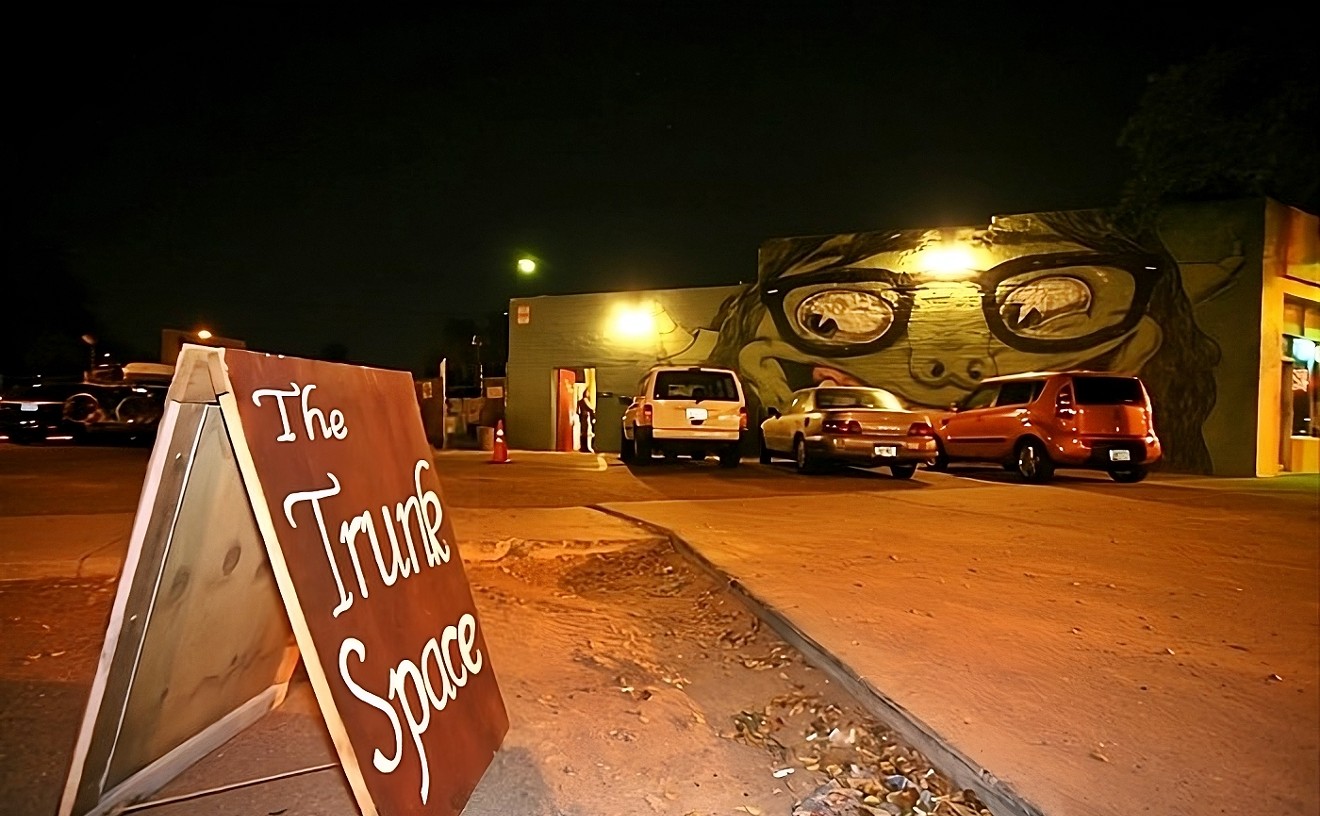For artist Petah Coyne, that isn't a barrier. It's a challenge.
Coyne delves past human fear to find the beauteous side of death in "Above and Beneath the Skin," an exhibition of sculpture and photography at the Scottsdale Museum of Contemporary Art. It's a sharp detour from the candy-colored pop art prints in the Warhol show next door.
Pendulous black chandeliers hang from the ceiling, sheltered in crimson roses caked with thick, heavy layers of black wax. Dead birds, feathers and skulls struggle beneath the black tide. Silk-wrapped chains attach each piece to the ceiling like umbilical cords, binding the museum to the forms Coyne lovingly refers to as her "girls." The monumental scale and visual appeal of the wax-coated roses would be enough to warrant an interest in her work. But Coyne's willingness to peel back the pretty layers we heap on the heavy issues of life is what makes her work successful on a deeper level.
Untitled #688 (Brides in Mourning) speaks to the divine feminine in mythology. A spidery canopy of baby-powder-coated steel wire and a stringy substance listed as "car hair" drapes a plump, curvaceous black figure. It is not the youthful longing of a happy bride, but the sobering realization of inevitability. For the Catholic-schooled Coyne, there were only two choices -- marry Christ, or marry the boy next door. In a recent interview, Coyne recalled declaring her intentions to marry a neighborhood boy when she was 14. This information terrified the young man, who ran and hid in his garage for two hours.
They have been happily married for more than 30 years.
In the room next door, a different portrayal of the bride and her connection to religion emerges. Untitled #1093 (Buddha Boy) is a frosted, white wedding cake of a bride, with a long train covered in melted wax, bows, ribbons, and other finery. Look closely beneath the layers of her waxed dress for a hidden effigy of the Madonna. This is the ideal woman. Virgin. Clean. Candles crown the statue's head, their products immersing the entire figure. She is frozen in time and place, the mysteries of womanhood yet to be revealed to her.
In the opposite corner is Untitled #1103 (Daphne), with her train of red blossoms and feathers decaying in black wax. She is the epitome of Dickens' Miss Havisham, the jilted bride who spent 30 years secluded in her mansion with a rotting wedding cake and disintegrating gown. Here Coyne shows the duality of woman -- a pristine exterior hiding the inaccessible interior of her true self. Peel back the layers and you have an entirely different woman. It is an insight that few artists have the ability to convey, but here, Coyne does it brilliantly.
Lining the walls are several of Coyne's black-and-white photographs, a detour from the large-scale sculptures she is known for. The images are captured using a self-styled pinhole camera, which creates a sense of blurred movement through longer exposure times. The subject material flows freely into the themes of the exhibition -- praying monks, feminine feet dancing -- but the prints themselves fade into the background. Photography can be a difficult medium to convey thoughts and feelings deeper than the surface image, and though I can sense the joy and vibrancy of Coyne's subjects flowing outward, it's simply not enough to pull my attention from the brides.
If Coyne's pieces are her "girls," then the gelatin-silver prints are the wallflowers of the group.
According to the exhibition notes, artist Ann Hamilton gave Coyne batches of horse hair shortly after Coyne's brother died from cancer six years ago. Hair can mean many things. A lack of hair can symbolize illness or loss, while long, flowing locks signify feminine beauty or male virility -- like the Biblical figure of Samson, who succumbed to Delilah's charms and, in doing so, lost his power. Following her brother's death, Coyne was able to carry a piece of his former vibrancy and vitality into her sculptures; to breathe his life essence into her newest girls.
Take, for example, Untitled #920 (Murasaki Shikibu & Sei Shonagon), which features two small plaster statuettes engulfed in a sea of brown and black horse hair. Beneath the flowing manes are representations of two Japanese female writers from the Heian period, arguably the first female authors of note. (Not surprising, given Coyne's penchant for Asian culture after growing up in an all-Japanese suburb in Hawaii.) I am alone in the thick silence of the museum. An air of death lingers, and yet, I expect the statues to move at any moment, to part the thick tangles of braids and turn to face one another like shogun warriors.
Creepy.
Is death the end or the beginning? To Coyne, death holds a beauty that she expresses through dangling wax chandeliers and forlorn brides. Days before her brother's death, she recalls that he smelled wonderfully sweet. Such a strange thing to notice in a time of grief. It is that ability to sense and understand the exquisiteness of death that makes me believe in her vision.










